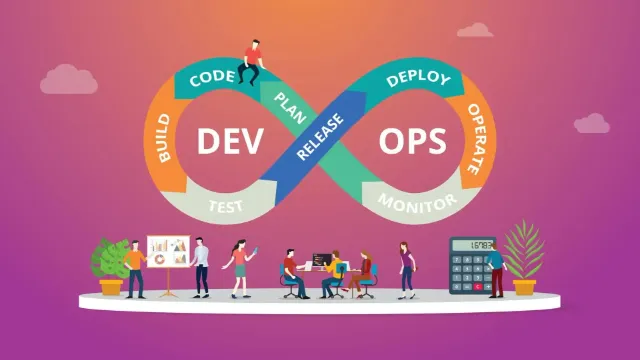Choosing the Right Software Development Models for Your Project

The way you develop software can affect how it performs, scales and serves its users. Software development models provide structure and timing across all the stages of development from planning to delivery. We will discuss here about eight of the most common Software development models, outline where they work best and provide insights that will enable you to make smarter decisions. Whether you are a developer, stakeholder or looking for dedicated software developers, understanding development models will set you up for a successful build.
Introduction:
Every software project has different teams, goals, users and timelines. That is why no single development model fits all. Some projects need rapid iterations, others need rock-solid planning. Choosing the right framework is less about trends and more about alignment between process and purpose. Whether you are working inside a custom software development company or planning to hire dedicated resources for a new build, how you work matters just as much as what you are building. Let us walk through eight Software Development models that shape how real products come to life.
Best Software Development Models For Your Project
Waterfall Model: When Clarity Comes First
The Waterfall model is one of the oldest approaches to software development and it still has its place. It follows a linear process; each phase happens one after the other.
Best For:
Projects with fixed requirements and little risk of change
Government, banking or manufacturing applications where documentation is critical
Why It Works:
It gives you total visibility into what is being built and when. But it is rigid once you have moved to the next phase; it is hard to go back.
Agile Model: For Projects That Evolve
Agile is everywhere for a reason. It’s built for flexibility, rapid iteration and constant feedback. Teams work in sprints that release usable software at the end of each cycle.
Best For:
Startups or fast-growing products
Projects where user needs are expected to shift over time
Why It Works
Agile encourages team collaboration, early delivery and continuous improvement. A top software development company often prefers Agile because it reduces risk and increases responsiveness.
Scrum: Agile’s Tactical Framework
Scrum is a lightweight framework that brings structure to Agile. It focuses on roles and ceremonies.
Best For:
Teams looking to improve communication and delivery pace
Projects that need predictable sprint cycles with measurable output
Why It Works:
Scrum helps hire dedicated software developers to work in sync with clear responsibilities and fast feedback loops. It creates a rhythm that pushes progress without overloading the team.
Kanban: Visualizing Flow, Minimizing Waste
Kanban is a multi-modal, flow-based project method that is visual. it is used with a physical or a visual board and has columns like “To Do” “In Progress” and “Done” to monitor and manage work and task flow.
Best For
Ongoing maintenance and support projects
Teams that want to do fewer check-ins while managing bottlenecks and throughput
Why it works
Kanban is flow-driven as opposed to timelines and the team members are able to see where work is getting stuck and adjust visually and in real time. This is valuable for teams that are managing lots of smaller tasks or tickets.
Also Read: 7 software development trends
Lean Software Development: Do More With Less
Inspired by lean manufacturing, this model emphasizes eliminating waste, improving learning cycles and empowering teams.
Core Principles
Deliver fast by building only what is needed
Amplify learning through small, tested changes
Build quality in from the start
Best For
Teams with limited resources
Companies looking to streamline operations or pivot frequently
Why It Works:
Lean is great when you need to hire dedicated resources and want to ensure maximum output with minimal overhead. It keeps teams focused on customer value, not just feature counts.
Spiral Model: Risk-Driven Development
This model blends the structure of Waterfall with the flexibility of Agile but adds a core focus: risk management. Projects loop through phases in “spirals,” each ending with a risk assessment and stakeholder review.
Best For
Large-scale enterprise software
Projects with high uncertainty or safety-critical requirements
Why It Works
It’s iterative, but disciplined. You get checkpoints to reassess scope, design and risks before moving too far. A software development company working on complex infrastructure often uses this to prevent costly rework.
V-Model: Testing at Every Step
Also known as the Verification and Validation model, the V-Model pairs each development phase with a corresponding testing phase.
How It’s Structured:
Requirements ↔ Acceptance Testing
Design ↔ System Testing
Architecture ↔ Integration Testing
Coding ↔ Unit Testing
Best For
Projects requiring strict validation, like medical, aerospace or automotive systems
Why It Works
Testing is baked into every stage. If you’re planning to hire software developers for compliance-heavy work this model helps catch bugs before they become problems.
RAD Model: Rapid Application Development
RAD is about speed. it emphasizes quickly prototyping with little planning. Build fast, test fast and revise fast.
Best For
Projects that are short-term and have tight deadlines
MVPs where user feedback is more important than polished features
Why It Works
With RAD, stakeholders interact with working prototypes early. When you hire dedicated software developers for a new product idea, it allows you to validate quickly and pivot without wasting time.
Which Model Should You Select?
There’s no single “best” model; it all depends on your product, your team and your timeline. Here’s how to decide
Select Agile or Scrum if your product is still rapidly changing or influenced by market changes.
After Select Waterfall or V-Model if accuracy, compliance or budget control is the highest priority.
Next, Select Lean or Kanban if you are optimizing an existing system or if you want to scale, continuing with limited resources.
Select Spiral if your project has a high degree of complexity or technical risk.
Select RAD if you are building an MVP and speed is more important than scope.
If all of this sounds foreign, a good software development company can help you assess your objectives in order to recommend the proper framework and help you hire dedicated resources who have worked in those models.
Final Take
A positive development process is often involved in every great software product. The eight Software Development models we have provided are not simply concepts; they are real techniques used by teams every day, in every industry, while making apps, platforms and systems to improve upon the world that we are in. Getting an in-depth knowledge of the working model is important since timelines can get affected and so can costs plus it gives trust to the users. Construction of the software either by oneself or outsourced would have these models at the back of one’s mind in order to bring about efficient and effective creation.
Also Read: Top 10 Software Development Outsourcing Companies
Author Bio
Carol Blair is the Content Manager at Hyperlink InfoSystem a leading app development company in USA & India. With years of experience in content strategy and digital marketing, she specializes in creating insightful, engaging and value-driven content that connects businesses with their audiences. She is passionate about exploring the latest trends in technology, innovation and digital transformation and she enjoys collaborating with industry platforms to share knowledge and fresh perspectives.






